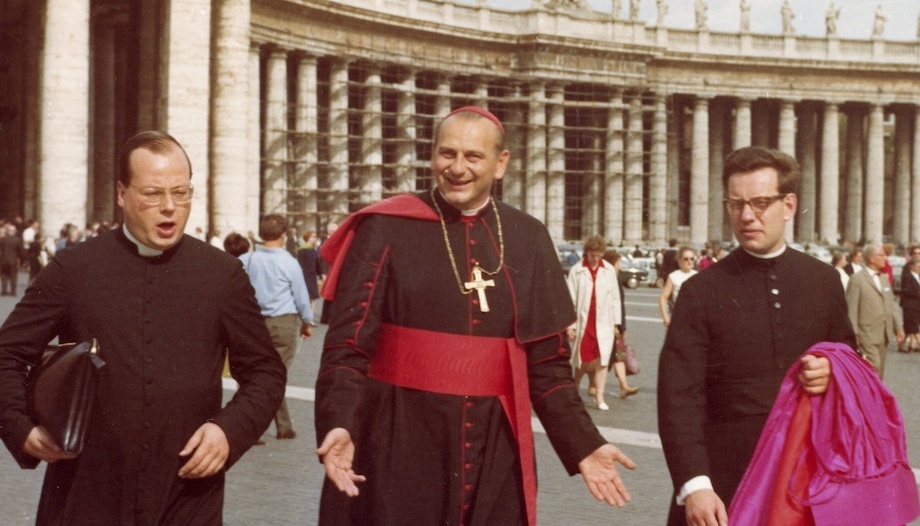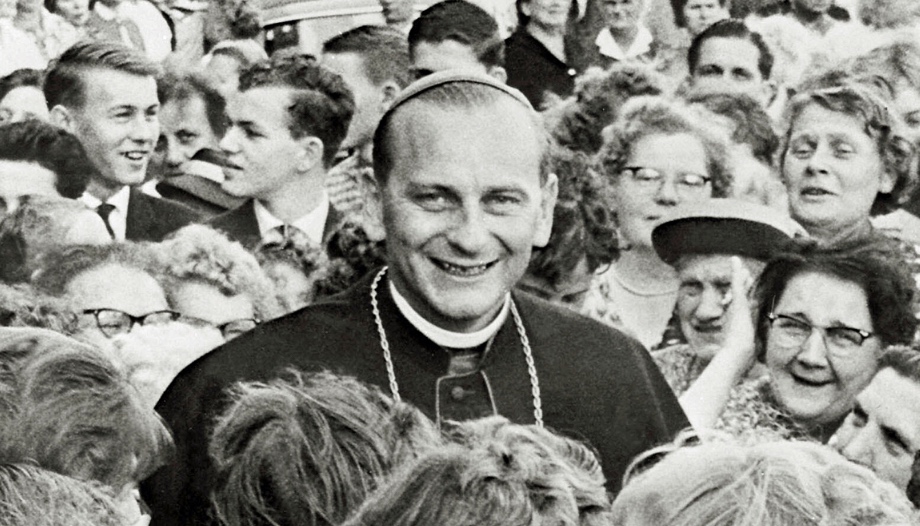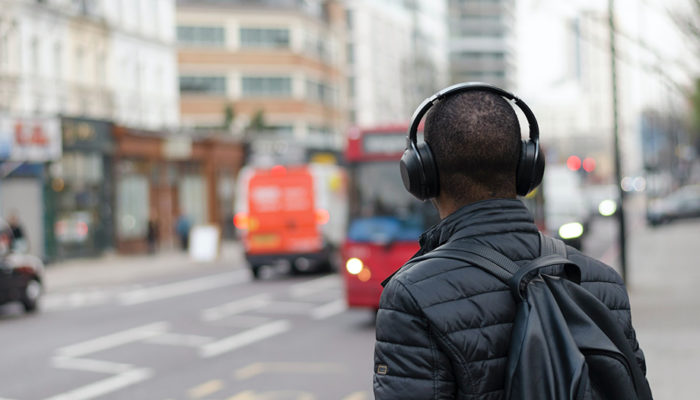The diocese (archdiocese since 1994) of Berlin is relatively young, having been erected in 1930. Until then it was part of the diocese of Breslau (today's Wrocław, in Poland), although since 1923 it had a certain autonomy, with an auxiliary bishop residing in Berlin. But it was on August 13, 1930 when, by virtue of the Bull "Pastoralis officii nostri", the diocese of Berlin was created, and the hitherto bishop of Meissen, Christian Schreiber, was appointed the first bishop of Berlin. He would remain bishop until 1933, his successor being Nikolaus Bares (1933-1935).
The first bishop to rule the diocese for a long period, leaving an indelible mark, was Bishop Konrad von Preysing (cardinal since 1946), appointed in 1935. Von Preysing not only stood out as an opponent of the National Socialist regime, but in his later years - he ruled the diocese until 1950 - he had to face the division of Germany and Berlin: in 1949 the Federal Republic of Germany in the west and the German Democratic Republic (GDR) in the east were created.
Berlin had been divided into four sectors since 1945, corresponding to the four Allied powers - the United States, Great Britain, France and the Soviet Union - and although, until the construction of the wall, there was relative freedom of movement within the whole of Berlin, by 1948 the former capital was divided into a West Berlin (the three sectors of the Western powers) and an East Berlin (the Soviet sector). When, in 1949, the Federal Republic and the GDR were created, the latter proclaimed Berlin (East) as its capital, while West Berlin became, de facto, a state of the Federal Republic.
When, in 1952, the GDR government prohibited the inhabitants of West Berlin from entering the territory of the GDR, West Berlin became a kind of "island" within the GDR. For this reason, even before the construction of the Berlin Wall, the diocese - which, from the point of view of canon law, was never divided: the bishop of Berlin was the bishop of the entire diocese, that is, not only of the territory included in the GDR, but also of East and West Berlin - was considered the most diplomatically and administratively difficult of the European churches. At a press conference on June 15, 1955, Bishop Wilhelm Weskamm (1951-1956), successor to Cardinal Von Preysing, described the situation in his diocese as a reflection of the disunity of Germany. Although he could move freely throughout Berlin, he needed permission for every trip into GDR territory, where he had to report to local police stations.
Because of the difficulties created by the division of Germany and Berlin, and also because of the increasingly anti-Christian character of the regime in the GDR, which, for example, prevented the bishops of the GDR from participating in the German Bishops' Conference, the "Berlin Conference of Ordinaries" (BOK) was established as early as 1950 with the bishops, auxiliary bishops and other holders of jurisdiction. In 1957, Weskamm's successor in the Berlin See, Julius Döpfner (1957-1961), issued a decree stating that the President of the BOK was the sole interlocutor for the authorities of the GDR ("Döpfner Decree"), in order to do everything possible to prevent the division of the Catholic Church in Germany.
Döpfner, to whom John XXIII granted the cardinalate in December 1958, soon came into conflict with the GDR government. In 1958, the subject of religion in schools was abolished, while at the same time greater weight was given to the "Jugendweihe" (the "consecration of youth" as an atheistic substitute for First Communion and Confirmation). The bishop reacts with a pastoral letter in which he sets out the doctrine of the Church. The confrontation between the bishop and the GDR regime led to a ban on the bishop, who was residing in West Berlin, to set foot in the east of the city. "The solution to this pastoral problem will be a novelty: the appointment of a second auxiliary bishop for Berlin", according to Alfred Bengsch's biographer, Stefan Samerski, since the existing one, Paul Tkotsch (1895-1963) was no longer in a position, for health reasons, to extend his radius of action to the eastern part of the city.
This is how Alfred Bengsch was appointed auxiliary bishop of Berlin on May 2, 1959. Bengsch was born - unlike all the previous bishops - in Berlin itself, in the western district of Schöneberg, on September 10, 1921. He had begun his theological studies when he was called up in 1941; after his period as a prisoner of war between 1944 and 1946, in that year he resumed his studies and was ordained priest by Cardinal Von Preysing on April 2, 1950.
Unlike Cardinal Döpfner, the new auxiliary bishop - having his domicile and seat in East Berlin, the de facto capital of the GDR - can move with relative ease throughout the diocese, which occupies a large part of the territory of the GDR, for example, to administer confirmations or to make pastoral visits.
The confrontation between Cardinal Döpfner and the authorities escalated rapidly in 1960, following his pastoral letter on the occasion of Lent, in which he directly attacked the regime. The death of the Archbishop of Munich-Freising, Cardinal Joseph Wendel, on December 31, 1960, provided the Holy See - in which an "Ostpolitik" of non-confrontation of the Church in the communist countries was beginning - with the possibility of withdrawing Döpfner from Berlin. Although the Cardinal informed the Pope that he wished to remain in Berlin, John XXIII personally wrote him a letter on June 22, 1961, outlining his decision to transfer him to the Bavarian capital.
On July 27, the Berlin cathedral chapter elected Auxiliary Bishop Alfred Bengsch as successor to Cardinal Döpfner, who had supported the election; he said at his farewell Mass before moving to Munich: "The fact that a bishop living in the eastern part of the diocese was appointed corresponds to imperative pastoral considerations".
The new Bishop Alfred Bengsch had not yet taken possession of the diocese when, on August 13, 1961, he was surprised by the construction of the "wall" while spending his summer vacation on the island of Usedom. That the division of Berlin, and thus of the diocese, was already a fait accompli can be seen from the fact that the inauguration had to take place separately, on September 19 in the church of Corpus Christi in East Berlin, and on September 21 in the church of St. Matthias in West Berlin. Although the territory of the diocese in the GDR was much larger than in the western part (West Berlin), the proportion of Catholics was much higher in the latter. In absolute numbers: in the entire east (East Berlin and GDR) there were about 262,000 Catholics; in West Berlin there were about 293,000, where 139 of the total 358 clergy worked.
Although Döpfner wrote to him proposing that, given the situation, it was practically impossible for a bishop residing in the GDR to rule the western part, so he advocated a division into two dioceses, Bengsch refused, putting the unity of the diocese first: "Let us preserve the unity of the Church" became the leitmotiv of his government. For this he had to confront the policy that the GDR authorities called "of differentiation" and which was nothing more than an attempt to divide the Catholic Church: a "policy of talks" with the clergy to inculcate them with socialist ideology.
Bengsch reacted by reaffirming the aforementioned "Döpfner Decree": relations with the state authorities are channeled exclusively through the president of the BOK. The bishop was limited to dealing with concrete issues with the authorities, imposing a political "abstinence" on the clergy. This does not mean, however, that they did not take a stand on moral issues, e.g. by preaching against the introduction of abortion.
In contrast to the situation of the Catholic Church in other communist countries, in the GDR it could count on the financial support of the Federal Republic; thanks to this it could maintain charitable works and hospitals.
According to Bengsch's biographer, Bengsch had "at least four trump cards up his sleeve" against the GDR authorities: much-needed foreign currency, medical care at the level of Western countries, an international connection with the Holy See, which "the regime could exploit politically and ideologically," and a relatively small number of Catholics in the GDR to unsettle the regime.
It would be interesting to examine in greater depth how the Second Vatican Council and the so-called Revolution of '68 influenced West Berlin in particular; the situation of the German dioceses extending to the territory east of the Oder and Neisse rivers, which became part of Poland after the Second World War, should also be discussed in this context: Bengsch was in favor of a complete reorganization, which would not really take place until 1994, after the fall of the wall, the German reunification in 1989/1990 and the definitive recognition by Germany of the "Oder-Neisse line" as the border with Poland.
Efforts for unity
Bengsch's efforts to maintain the unity of his diocese against all attempts to make West Berlin "independent" by becoming a new jurisdiction, for example, by appointing an Apostolic Administrator.
In this context, the so-called "Ostpolitik" of the Vatican, after and even during the aforementioned Council, must be mentioned: from 1963 onwards, the Holy See began to establish relations with Eastern countries - first of all, Hungary and Yugoslavia. The idea of this "Ostpolitik" of the Holy See was the adaptation of ecclesiastical borders to state borders; this would be the dominant theme in Church-State relations until 1978.
Above all, Cardinal Agostino Casaroli, since 1967 a sort of "foreign minister" of the Holy See, considered his actions in East Germany as exemplary for the entire Eastern Bloc.
The GDR was pressing for the establishment not only of new dioceses, but also of a "national" bishops' conference. Although, in July 1973, administrators were appointed for Erfurt, Magdeburg and Schwerin, thanks to the influence of (since 1967) Cardinal Bengsch, no "apostolic administrations" were set up.
Although pressure from the GDR government led to the creation of a new bishops' conference, Cardinal Bengsch succeeded in having it called, at least, not "Bishops' Conference in the German Democratic Republic" or similar, but "Berlin Bishops' Conference" ("Berliner Bischofskonferenz" BBK), whose statutes were approved by the Holy See on September 25, 1976, for a probationary period of five years.

In the ensuing tug-of-war, the BBK describes the erection of "three apostolic administrations" as a "lesser evil" if the Holy See considers it "unavoidable". In May 1978, Cardinal Casaroli informed GDR Foreign Minister Otto Fischer that the Holy See, while not erecting dioceses in East Germany, would set up apostolic administrations.
Cardinal Höffner, in his capacity as president of the German Bishops' Conference, immediately lodged a protest in Rome. Following the Pope's final decision on July 2, 1978, preparations for this canonical step began. However, Paul VI died on August 6, without having signed the decrees.
The election of Karol Wojtyła as Pope was a great joy for Cardinal Bengsch: they had met at the Second Vatican Council, and both had been created cardinals at the same consistory. In addition to a personal friendship - a photo has been preserved documenting how the then Cardinal of Krakow visits the Cardinal of Berlin in the latter's home in September 1975 - they not only coincided on theological questions, but also on questions of "Ostpolitik": John Paul II treated these matters with a "dilata", so that the corresponding documents disappeared in a drawer of the Curia. Thus the ecclesiastical status quo remained unchanged in the GDR until its end on October 3, 1990.








